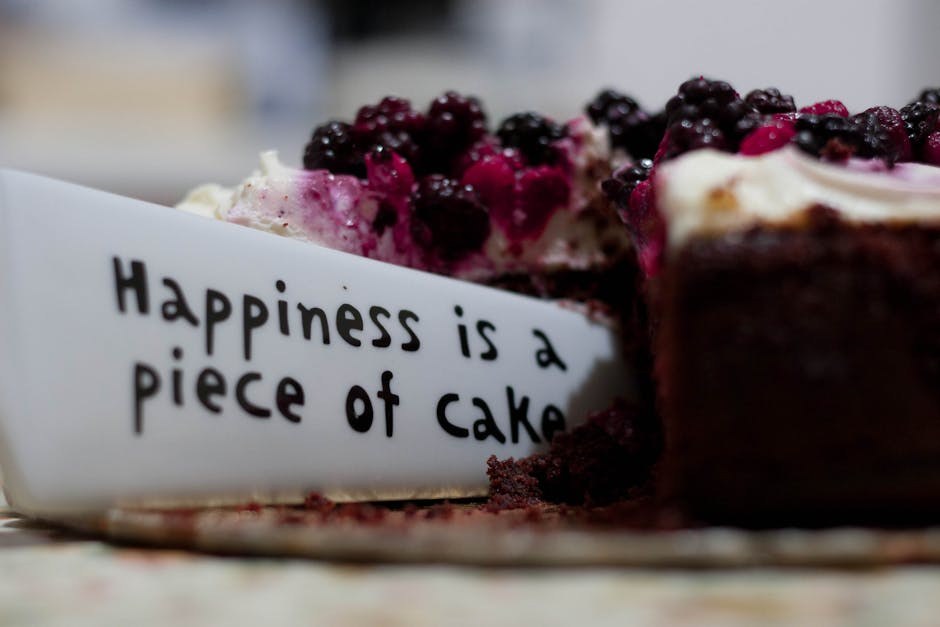People rarely announce intimate secrets-yet behavior leaves breadcrumbs. If you’re trying to figure out whether two people are sleeping together, you don’t need access to their messages or a confession. Everyday interactions often shift in small but telling ways, and those shifts add up. What follows isn’t about prying for sport; it’s a guide to reading ordinary moments with care so you can understand what may be unfolding between two adults who prefer to keep things quiet. One sign in isolation proves very little, but a pattern of signs can point to two people sleeping together far more reliably than any rumor mill.
How subtle signals spill the secret
Words can be edited-posture, timing, and tiny choices are much harder to stage-manage for long. When two people are sleeping together, their bodies often drift closer, their attention tunes in, and their social calculus changes. Think of these tells as a soft chorus rather than a single drumbeat: each one is faint, but together they can be persuasive. Use these observations thoughtfully, and remember-discretion matters. You can notice without broadcasting, especially when the possibility of two people sleeping together involves friends or coworkers who would rather keep things under wraps.
Behavioral cues to watch-quiet but consistent
-
Closeness that keeps shrinking
Personal space is a social contract. When two people are sleeping together, invisible boundaries tend to loosen-chairs scoot nearer, shoulders angle inward, and they stand just a little too close for “just friends.” You may catch them leaning in during group chatter as if a string were tugging them together. If the distance fluctuates-close one day, conspicuously apart the next-that ebb and flow can also hint at two people sleeping together who are managing a private disagreement.

-
Looks that last a beat too long
A glance can be casual; a gaze carries weight. People who are sleeping together often exchange eye contact that lingers half a heartbeat beyond normal. It’s not cinematic staring-more a micro-pause that says, we remember last night. Those quick, magnetic looks can appear during jokes, while others are speaking, or across a room. You don’t need to stare; brief observation is enough to catch this small signature of two people sleeping together.
-
Touch that feels easy, not performative
Light touches happen among friends, but frequency and location matter. A palm on the side of the torso, a hand at the lower back, fingers resting and not flinching away-these touches suggest familiarity. When someone is sleeping together with another person, their nervous system treats that contact as normal, not startling. Watch for relaxed reactions rather than exaggerated giggles; comfort is the giveaway that two people may be sleeping together.
-
Protective reflexes kick in
Intimacy often awakens a guard-dog instinct. If teasing from others crosses a line, you may see swift defense-correcting rumors, redirecting conversations, or bristling when the other is criticized. It’s subtle, not theatrical. People who are sleeping together frequently show this caretaking stance-stepping in with a calm “that’s not fair”-because they feel invested. That quiet loyalty can reveal two people sleeping together even when they speak as if they’re indifferent.

-
Private shorthand and inside jokes
Shared experiences breed code-quirky phrases, a micro-nod, an eyebrow flash that says volumes. When two people are sleeping together, they often evolve a playful dialect that others can’t quite translate. You might notice a soft laugh at a reference no one else gets, or a look that ends a conversation without words. That low-key inside joke dynamic tends to appear once two people are sleeping together and spending unobserved time together.
-
Odd hours, familiar pairings
Chance meetings happen, but timing tells a story. Spotting the pair together very early or very late-grabbing coffee just after sunrise, leaving the same event minutes apart at night-can be circumstantial evidence. People who are sleeping together try to avoid obvious entrances and exits; they stagger arrivals and departures. Over days or weeks, this choreography can suggest two people sleeping together who are careful about optics.
-
Name-dropping that ramps up
When someone is on your mind, their name slips into conversation. If a person keeps mentioning the other’s weekend, taste in music, or recent wins, it can indicate interest-or more. Hesitation when questioned is telling. Folks who are sleeping together may fumble for neutral phrasing, because specifics could expose logistics. That guarded tone often accompanies two people sleeping together who aren’t ready to go public.

-
Teasing as a smoke screen
Mock annoyance can be flirtation in disguise. A nudge about a habit, a playful eye-roll, a tiny “you’re impossible”-done often and only with that one person-can mask attraction. When two people are sleeping together, banter becomes a safe container for affection in public. The act is to look adversarial; the effect is chemistry. Repetition of this pattern may hint at two people sleeping together while pretending to be barely tolerant of each other.
-
Careful wording and delayed answers
Ask casual questions-weekend plans, last night’s movie-and listen for edits. People who are sleeping together sometimes speak in tidy fragments, buying time to avoid inconsistencies. You’ll hear neutral verbs-“met up,” “hung out,” “was out”-instead of specifics. That verbal choreography can signal two people sleeping together who are working around the truth without outright lying.
-
Smiles that signal a secret
Happiness alone proves nothing; context does. When laughter spikes only around one person, when there’s a soft, private smirk that appears and vanishes, it can be the glow of shared intimacy. People who are sleeping together often look newly buoyant-lighter in posture, more animated in exchanges with each other. That energy, particularly when it surfaces exclusively in this pairing, can suggest two people sleeping together.
-
Distance as camouflage
Some choose the opposite strategy-avoidance. If they stop appearing in the same frame, arrive at different times, or switch seats when the other walks in, that overcorrection can be conspicuous. People who are sleeping together may believe distance erases suspicion, but sudden, sustained separation can backfire. Over-managed space often flags two people sleeping together who are scared of being read.
-
Personality pivots near each other
Watch for shifts: the extrovert turns quiet, the jokester becomes shy, the nonchalant one grows attentive. A change that activates only in the other’s presence can be meaningful. Folks who are sleeping together sometimes recalibrate-less flirting with others, more watchfulness, new reserve. That selective adjustment hints at two people sleeping together and managing boundaries in public.
-
The third-wheel sensation
Group dynamics tell tales. If you regularly feel like an extra in their two-person movie-conversations arc around them, side comments exclude you, time seems to dilate when they talk-trust that read. People who are sleeping together often slip into a dyad even in larger circles. That magnetic loop can make friends feel peripheral, signaling two people sleeping together even without overt affection.
-
Goodbyes that hold on
Hugs are common-duration is the tell. A farewell that lingers a breath too long, a head resting on a chest, arms that tighten before release-those are intimate rhythms. People who are sleeping together often default to a warmer, slower goodbye. If it happens every time, and only between them, it can reveal two people sleeping together despite otherwise cautious behavior.
-
Polish and presentation upgrades
Attention to appearance often accompanies new desire. Fresh cologne, sharper outfits, subtle grooming changes-especially when timed to shared plans-can be telling. When someone is sleeping together with a partner, there’s incentive to look a touch more put-together. If both parties are suddenly upping their style in parallel, it may point to two people sleeping together and trying to impress each other.
-
Entrances and exits in sync
Coordination without contact is common among people keeping a low profile. Watch for staggered arrivals that cluster within minutes, and departures that consistently echo one another. People who are sleeping together often choreograph movements to avoid walking in or out side by side. The pattern-not a one-off-suggests two people sleeping together who are minimizing obvious overlap.
-
Phone checks that mirror each other
In meetings or group hangs, you might see synchronized glances at screens, followed by quick eye contact and a contained smile. That rhythm can indicate live back-channeling. Folks who are sleeping together sometimes text from across the room to share commentary, logistics, or a playful secret. The near-simultaneous look-down, look-up move is a small but familiar tell that two people are sleeping together and communicating in parallel.
Reading patterns-without playing detective
It bears repeating: one clue is weak evidence. People hug long after hard weeks, dress up for reasons unrelated to romance, or keep distance because of conflict that has nothing to do with sleeping together. What matters is accumulation and consistency. When you notice many of these behaviors cropping up together-shrinking space, private code, strategically timed entrances-then the portrait sharpens. At that point, it’s reasonable to infer they may be sleeping together, even if they’d never say so out loud.
Your motives matter too. Are you relieved by the idea that they’re sleeping together, because you like them as a pair? Are you uneasy because one person isn’t trustworthy? Curiosity can be harmless, but broadcasting suspicions can do real harm. Treat what you observe with care. If your concern comes from wanting to protect a friend, focus on their well-being rather than extracting a confession. You can ask how they feel, whether they’re being treated kindly, and whether their boundaries are respected-none of which requires naming that they’re sleeping together.
Privacy counts. Even if you’re confident two people are sleeping together, it isn’t your story to share. Gossip grows legs; reputations do not always keep up. Notice the signs, make calm choices, and resist the urge to turn someone’s private life into public entertainment. If your interest is personal-say you’re wondering whether someone is available-remember that guessing wrong can damage trust. It’s better to proceed slowly than to assume two people aren’t sleeping together and end up intruding on something real.
There is also the quiet truth that intimacy changes how we move through the world. Even casual arrangements alter attention, body heat, and micro-habits. That’s why your read can feel so strong when two people are sleeping together-their nervous systems are coordinating, their schedules are bending toward each other, and their tiny decisions are aligning. You’re witnessing the gravitational pull of closeness. Respect it, even when you decode it.
Putting it all together-see the forest, not just the trees
Use a wide lens. Maybe you’ve clocked an easy touch, an early-morning coffee, and a goodbye that lingers. Alone, each detail is innocuous; together, they sketch a narrative. When two people are sleeping together, their choices often harmonize across settings: at work, among friends, in transit, online. Look for that harmony-how posture mirrors posture, how timing pairs with timing, how humor locks in. If the pattern persists over time, your inference gains strength that they’re sleeping together.
At the same time, give people room to be human. Misreads happen. Some people are naturally tactile; others hold back because they’re shy, not because they’re hiding anything. Let compassion guide your conclusions. If recognizing these signs helps you support a friend-great. If it merely feeds curiosity, consider stepping back. You can understand that two people are sleeping together without turning their closeness into a spectacle. In the end, the most respectful posture is simple: observe gently, decide privately, and speak kindly.